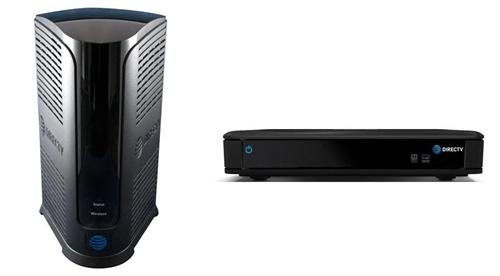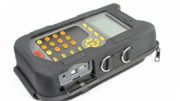It’s the top of the line. DIRECTV’s Genie 2 gives you capabilities you never thought a DVR would have. Cover up to 7 rooms and get rid of wires and boxes that you never really understood anyway. It even gives you live 4K programming in up to 2 rooms.
But as glamorous as it is, DIRECTV refers to it by a rather pedestrian name: HS17. The name itself doesn’t really fit into DIRECTV’s nomenclature, or does it? Let’s take a look.
It started with DIRECTV’s ‘D’ and ‘R’ series. Before 2003, DIRECTV receivers were branded by Hughes, Thomson, RCA, and other companies. In 2003 DIRECTV started dictating the design language that was used and called its first branded receiver the D10. The DVR equivalent was the R10. For a while after that they just increased the number by one or five. A one-number increase wasn’t super special (D11 wasn’t much more than D10) but for example the R15 DVR was completely different from the R10 DVR and was, in fact, the progenitor of every DIRECTV DVR since.
Then came H. When DIRECTV started branding its own HD receivers, it was natural to replace the ‘D’ with an ‘H.’ The H10 was the first one but it was not successful – the H20 rode an all-new platform. As for DVRs, ‘HR’ was the naming scheme, and HR10 was followed by the all-new HR20.
Things got a little quieter for a while as you can tell by the slow progression of names, to H21, H23, H24, H25 as well as HR21, HR22, HR23, HR24. Newer boxes were packaged differently or were faster, but the capabilities were the same.
Then we saw a big jump to HR34, the original Genie. A new class of boxes known as “clients” came out and predictably took ‘C’ names like C31.
And then, the whole naming scheme changed.
HR34 gave way to HR44 and HR54, while clients jumped from C31 to C41 to C51 to C61 with barely any changes. If you’d been following the old numbering scheme you would have expected big things there. It was at this time I started hearing that the DVR numbering scheme now had the first number showing the “generation” (in other words an HR44 was a 4th-generation) and the second number was the total number of rooms served. An HR44 with three clients (the max available at one moment) serves four rooms. OK, makes sense. The client names were explained the same way. C31 was the 3rd generation receiver (D-series was the first, H-series was the second) and served one room. It’s a little bit of a stretch to say the nearly-identical C41 was a 4th generation, but they were rolling so whatever.
And then, HS17.
You can tell by the number, even without looking at the tower, that it’s a different thing. The way it’s been explained to me, it’s a 1st-generation “server” (not DVR) that serves 7 rooms. So the S is there instead of an R because it’s a server, the rest makes sense. I guess that explains it.
Early in the development process I was told the HS17 was so named because it was planned to ship in 2017 and the thought was, the “17” number would give the system designers some motivation to make sure it didn’t slip to 2018. That turned out to be just a rumor.
Not that model numbers matter much of course, especially when about 99% of people will just call it a Genie 2, but it’s interesting to see how these things come about. At least I find it interesting.





